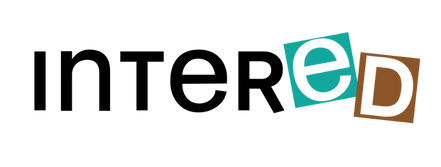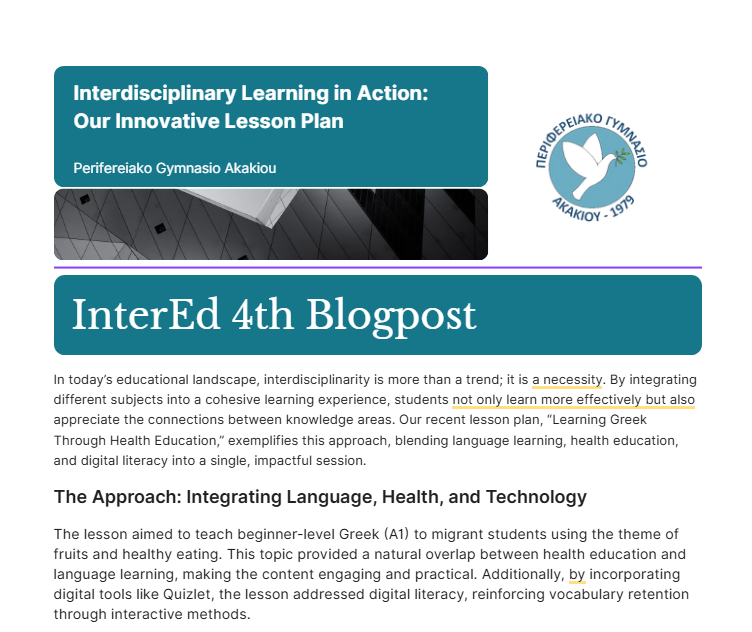In today’s educational landscape, interdisciplinaity is more than a trend; it is a necessity. By integrating
different subjects into a cohesive leaning expeience, students not only lean more effectively but also
appreciate the connections between knowledge areas. Our recent lesson plan, “Leaning Greek
Through Health Education,” exemplifies this approach, blending language leaning, health education,
and digital literacy into a single, impactful session.
The Approach: Integrating Language, Health, and Technology
The lesson aimed to teach beginner-level Greek A1 to migrant students using the theme of fuits and healthy eating. This topic provided a natural overlap between health education and language leaning, making the content engaging and practical. Additionally, by incorporating digital tools like Quizlet, the lesson addressed digital literacy, reinforcing vocabulay retention through interactive methods.
Language Leaning Objectives
The linguistic goals focused on teaching:
Greek names of 15 fuits.
Colors and the use of definite aticles in Greek.
Verbs and phrases related to cooking and eating.
Reading comprehension of a simple Greek recipe.
Practical application was a key element, with students practicing these skills while prepaing a fuit salad—a hands-on activity designed to reinforce vocabulay and sentence stucture in context.
Health Education Goals
The health component aimed to instil awareness about the benefits of healthy eating, emphasizing:
The nut itional value of fuits
Practical skills like discussing favoite fuits and their benefits in Greek.
By linking language acquisition to health awareness, the lesson empowered students to use their new vocabulay in real-life situations.
The role of Technology
Digital tools like Quizlet elevated the leaning expeience, making vocabulay acquisition interactive and personalized. The use of the platfom’s “Lean” and “Match” features ensured that students could visualize and practice fuit-related vocabulay effectively.
Lesson Flow
The session was stuctured to maintain engagement while meeting its objectives:
- Introduction (10 minutes) Visual aids like flashcards or real fuits were used to introduce seasonal fuit names in Greek, reinforcing pronunciation and testing preexisting knowledge.
- Vocabulay Practice 15 minutes) A Quizlet activity followed by a worksheet helped students familiaize themselves with new tems and grammar.
- Recipe Reading 10 minutes) A simple, illustrated recipe for a fuit salad provided a platfom for reading comprehension and translation exercises.
- Health Discussion & Activity 15 minutes) Students leaned about the health benefits of fuits and paticipated in making a fuit salad, practicing their new vocabulay in a collaborative setting.
The Impact of an Interdisciplinay Approach
This approach demonstrated the benefits of weaving multiple disciplines into a single lesson. Language acquisition became more meaningful when paired with practical skills and health education. The hands-on fuit salad activity ensured active paticipation, making the leaning expeience memorable and relevant. Futhemore, the integration of technology suppoted vaied leaning styles, allowing students to interact with the content in different ways.
Final Thoughts
By embracing an interdisciplinay strategy, this lesson plan transcended traditional subject boundaies, offeing a holistic leaning expeience. Students didn’t just memoize Greek vocabulay; they engaged with cultural, practical, and health-related contexts that deepened their understanding and application of the language.
For educators, this model underscores the value of innovation in lesson planning. It challenges us to think beyond textbooks and worksheets, crafting lessons that reflect the interconnectedness of the real world.

